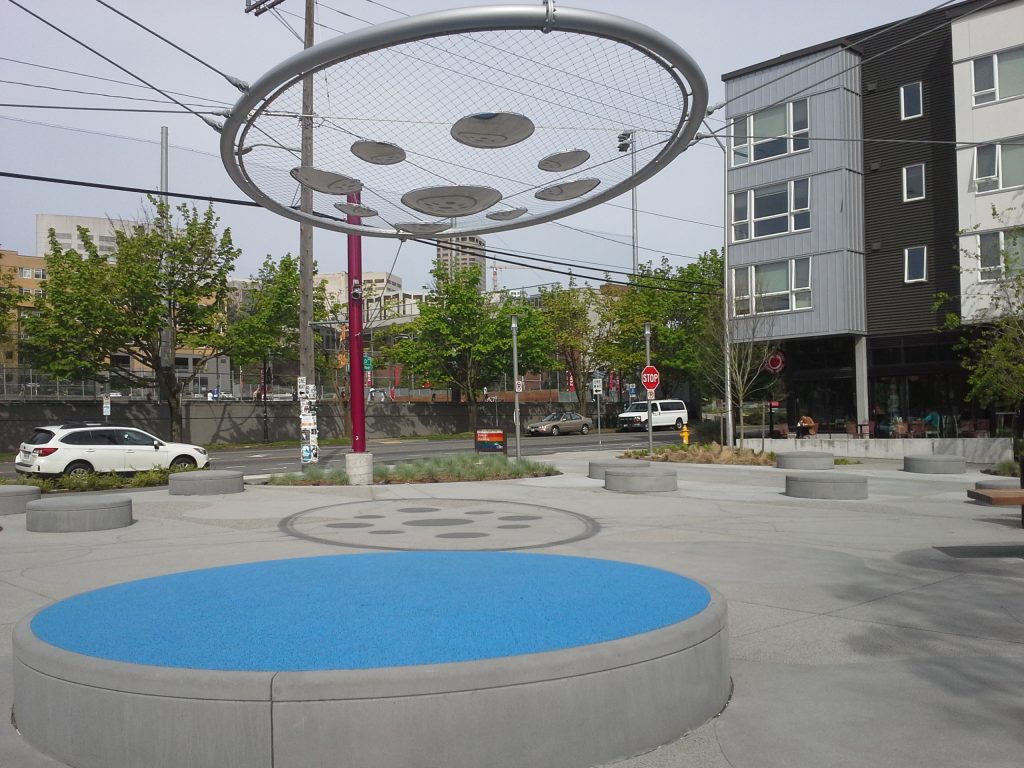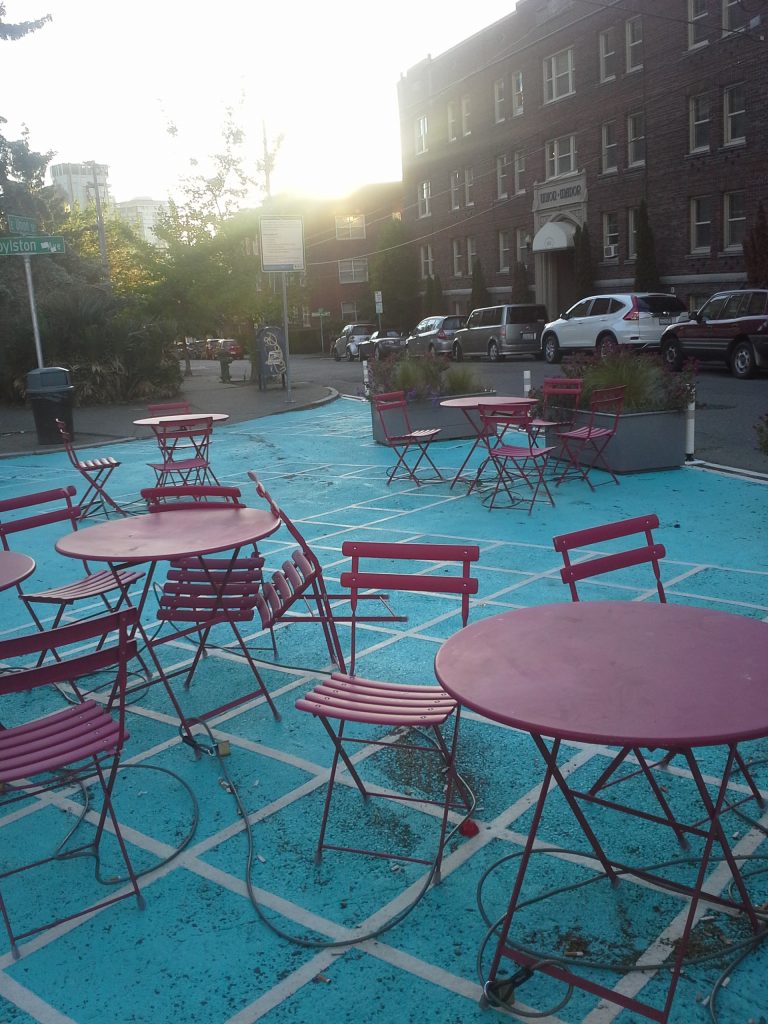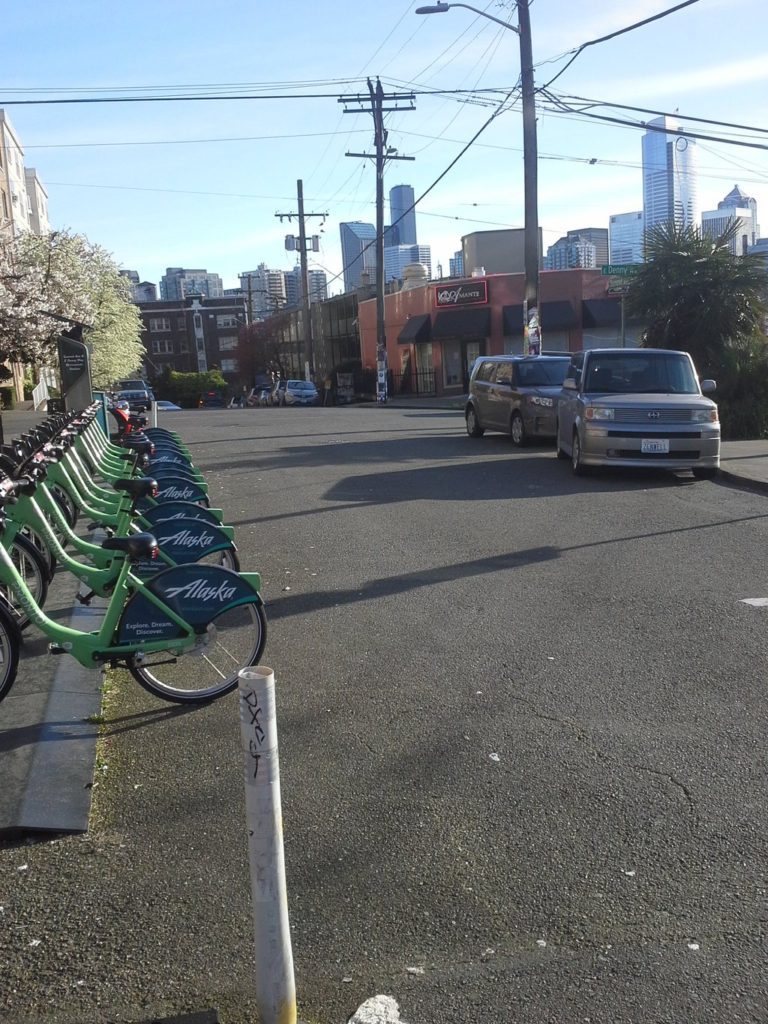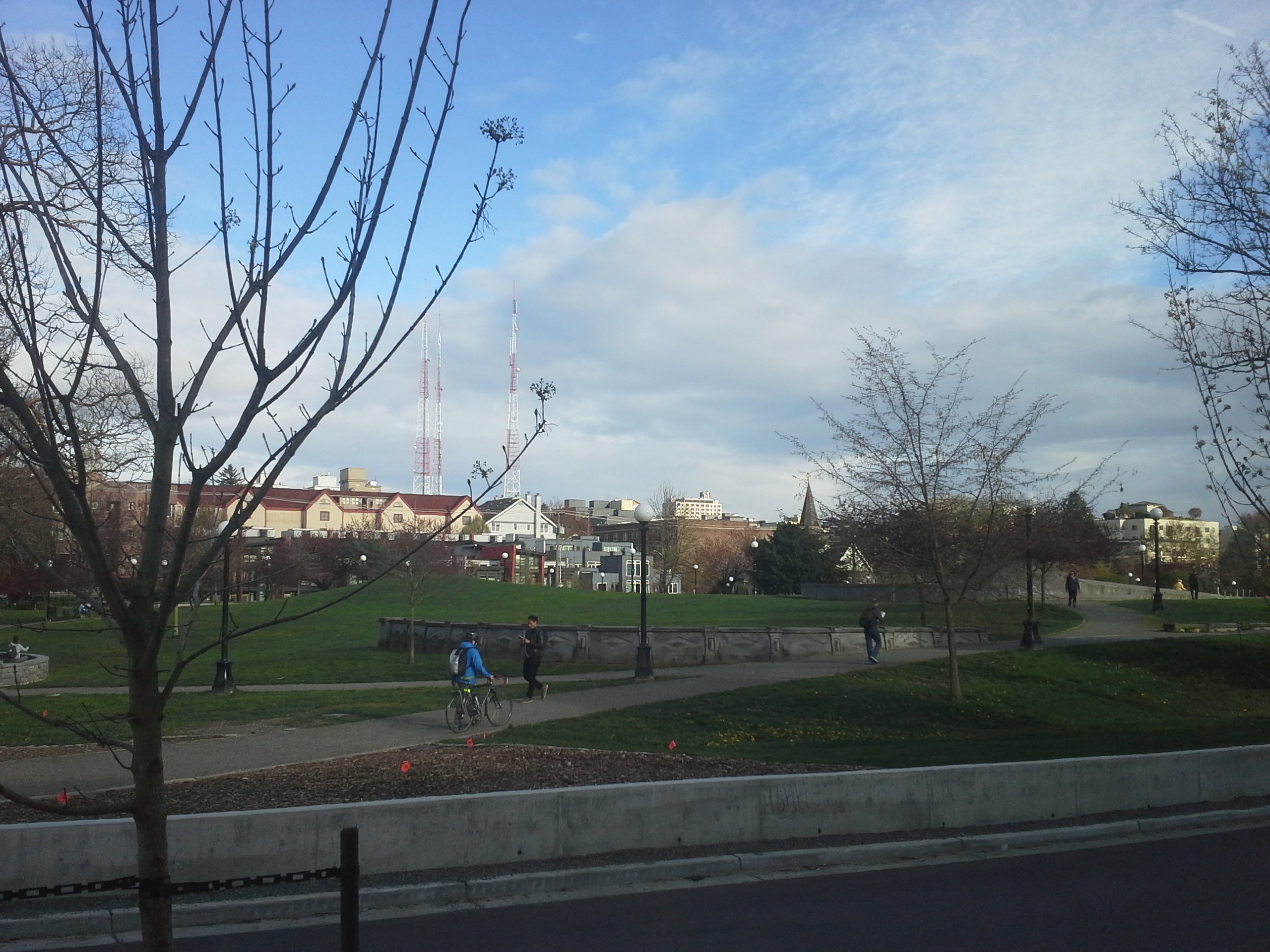Last year, when the City of Seattle acquired the dilapidated Sisley properties on NE 65th Street under eminent domain, the drumbeat of neighborhood residents was immediately heard clamoring for the site to be turned into a park. This ignored the fact that property it is zoned for 65-foot buildings, and within the five-minute walkshed of Seattle’s next northward expansion of light rail. It also failed to recognize the short distance that the area sits from Ravenna Park, one of Seattle’s great legacy open spaces.
Whatever the motivation behind the argument from local residents, the message was clear: park space is a more immediate priority than making room for new neighborhood residents despite a clear opportunity to do so.
A similar argument is now taking place around the University District rezone: “where’s the open space next to University District station?” is the talking point de jour for many U District residents. This from the neighborhood that sits next to the great lawns of the University of Washington and one that was content to only receive half of a new park on the University Heights grounds at NE 55th St and University Way NE rather than give up an entire parking lot.

To be clear: Seattle’s open spaces are a city treasure, and should be expanded at every opportunity where it makes sense. But very frequently when concerns about a lack of open space development occurring in our neighborhoods comes up, the aim is really to stop building. Much like the concern that is brought up over lack of “concurrency” with regard to building out transportation infrastructure when it comes to new development, there is frequently little to back up the claim that Seattle is not providing enough open space for its residents.
A recent article in the Seattle Weekly laments that the City is “retreating” on open space goals. It’s a claim that is a little hard to take on its own merits and not as a way of taking a swing at recent development trends. The main piece of evidence provided in the piece is the City’s attempt to sell off parts of the 32-acre Myers Parcels in White Center. The City is intending to fund components of the City’s plan to combat homelessness with funds raised from the sale. The merits of this sale can be discussed on their own terms, but to call them a microcosm of the City’s approach to open space is disingenuous.
Seattle’s parks and recreation system currently occupies 11% of the land area in Seattle. In 2012, there was 8.9 acres of parkland for every 1,000 Seattle resident. Looking at other cities, Seattle has more park space per resident than Boston, San Francisco, New York, and Chicago. We are behind Portland and other more spread out cities such as Phoenix and Houston. But the threshold of parkland needed to keep a city livable is certainly not a threshold we are anywhere near.
Most important in my mind to address is the argument that the City is looking to augment its open space goals by investing, rather than in traditional green space, in the conversion of street space. The Seattle Department of Transportation now has a division devoted to looking at alternative uses for street spaces. They are committed to developing several “pavement parks” per year.

To see these parks as siphoning resources away from traditional park spaces is to completely miss the point of them. These projects take underutilized portions of Seattle’s rights-of-way (over 14,000 acres citywide) and turn them over for city residents to use on a daily basis, rather than people speeding through them only in their vehicle. This means that Seattle’s adaptive streets are directly contributing to Vision Zero goals in much the same way that a protected bike lane on a road diet is doing so. The fact that these spaces also help to add open space in an area of the city that is generally lacking open space is a clear win-win.
The next pavement park space in central Seattle is going to occupy a slice of Summit Avenue between Denny Way and Olive Way. This street, currently home to only two parking spaces, is used as a quick cut through and the neighborhood will become safer without it.

Also ignored is some of the work being done to completely transform some ordinary public spaces in Seattle, such as the Melrose Promenade or the lid I-5 campaign.
More parks and open space are worthy things to advocate for in a growing city. But Seattle residents should look at the bigger picture and see how the city as a whole is moving toward expanding park space for everyone wherever it can, and shouldn’t view the tools in the toolbox as competing against one another.
Ryan Packer has been writing for The Urbanist since 2015, and currently reports full-time as Contributing Editor. Their beats are transportation, land use, public space, traffic safety, and obscure community meetings. Packer has also reported for other regional outlets including BikePortland, Seattle Met, and PubliCola. They live in the Capitol Hill neighborhood of Seattle.


